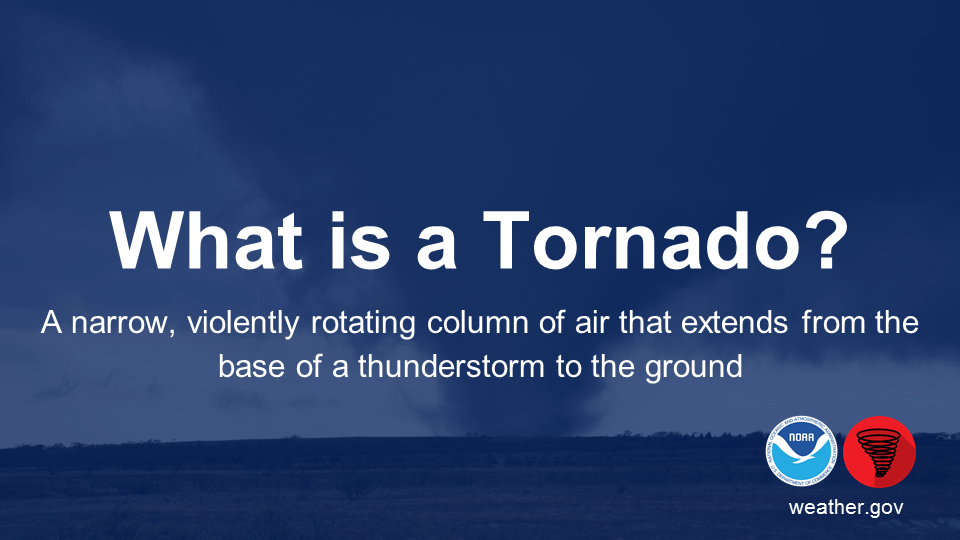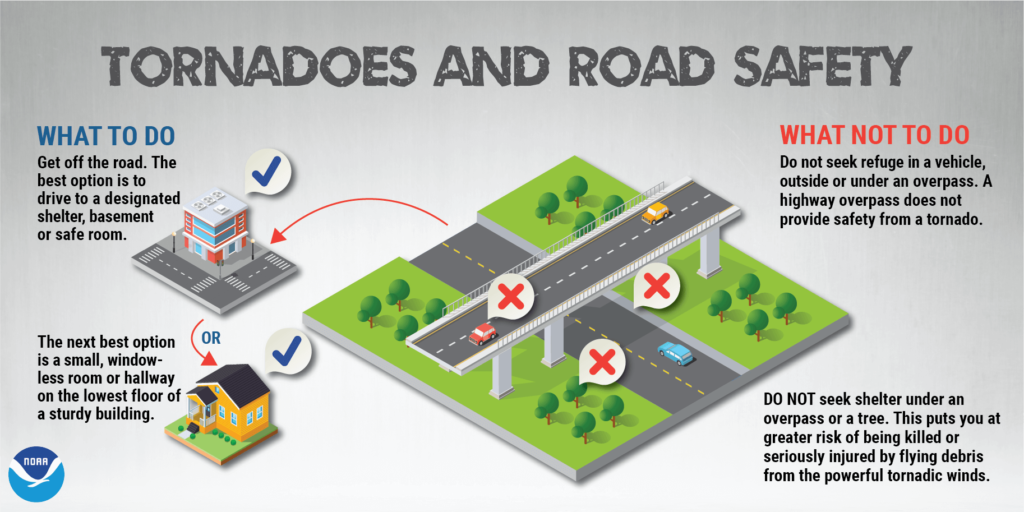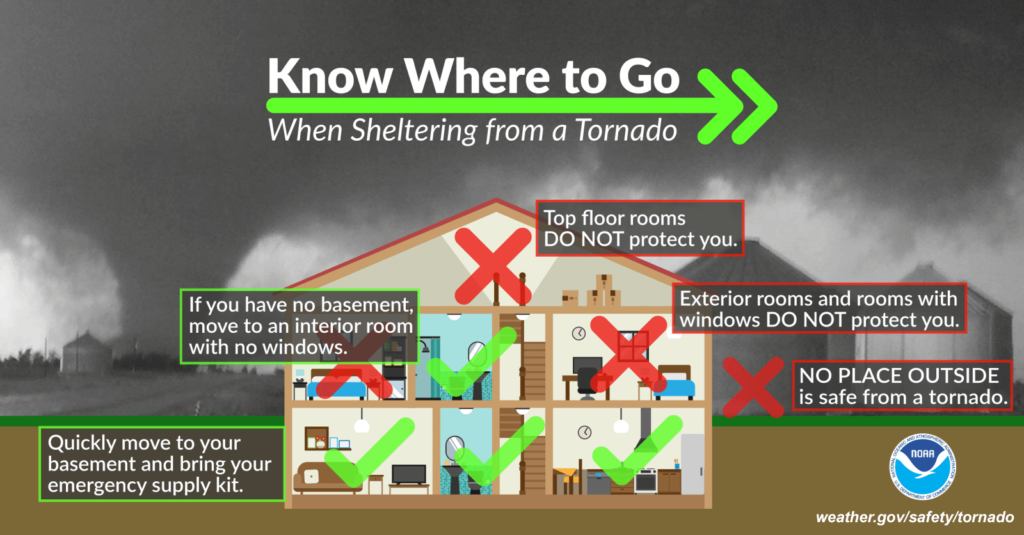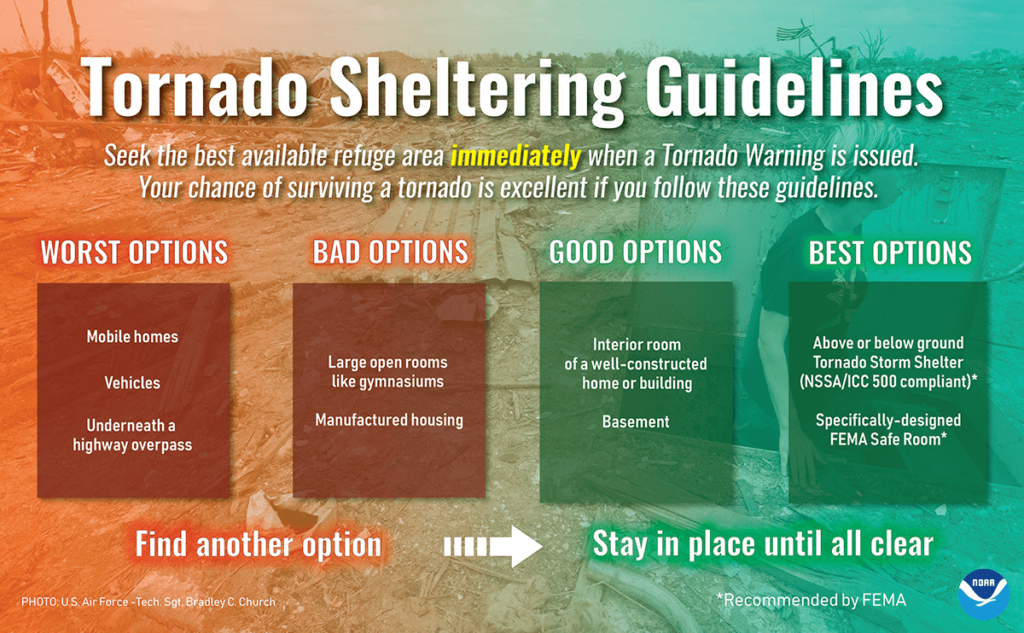Common Emergencies in Central Virginia
Tornadoes
ABOVE: TORNADO SAFETY INFORMATION FROM NOAA
A tornado is a violent rotating column of air that extends from the base of a thunderstorm to the ground. Because wind is invisible, it is hard to see a tornado unless it forms a funnel made up of water droplets, dust and debris. Tornadoes are the most violent of all storms.
Tornadoes can destroy buildings, flip cars, and create deadly flying debris. Tornadoes are violently rotating columns of air that extend from a thunderstorm to the ground. Tornadoes can:
- Happen anytime and anywhere;
- Bring intense winds, over 200 MPH; and
- Look like funnels.
Practically speaking, it is nearly impossible to measure the actual wind speed inside tornadoes, as they can destroy just about any unprotected weather instruments placed in their path. This is why a measurement system for estimating the intensity of tornadoes after their impact was devised, a system known today as the Enhanced Fujita (EF) Tornado Intensity Scale. The EF Scale is the standard way to measure tornadoes based on wind damage.
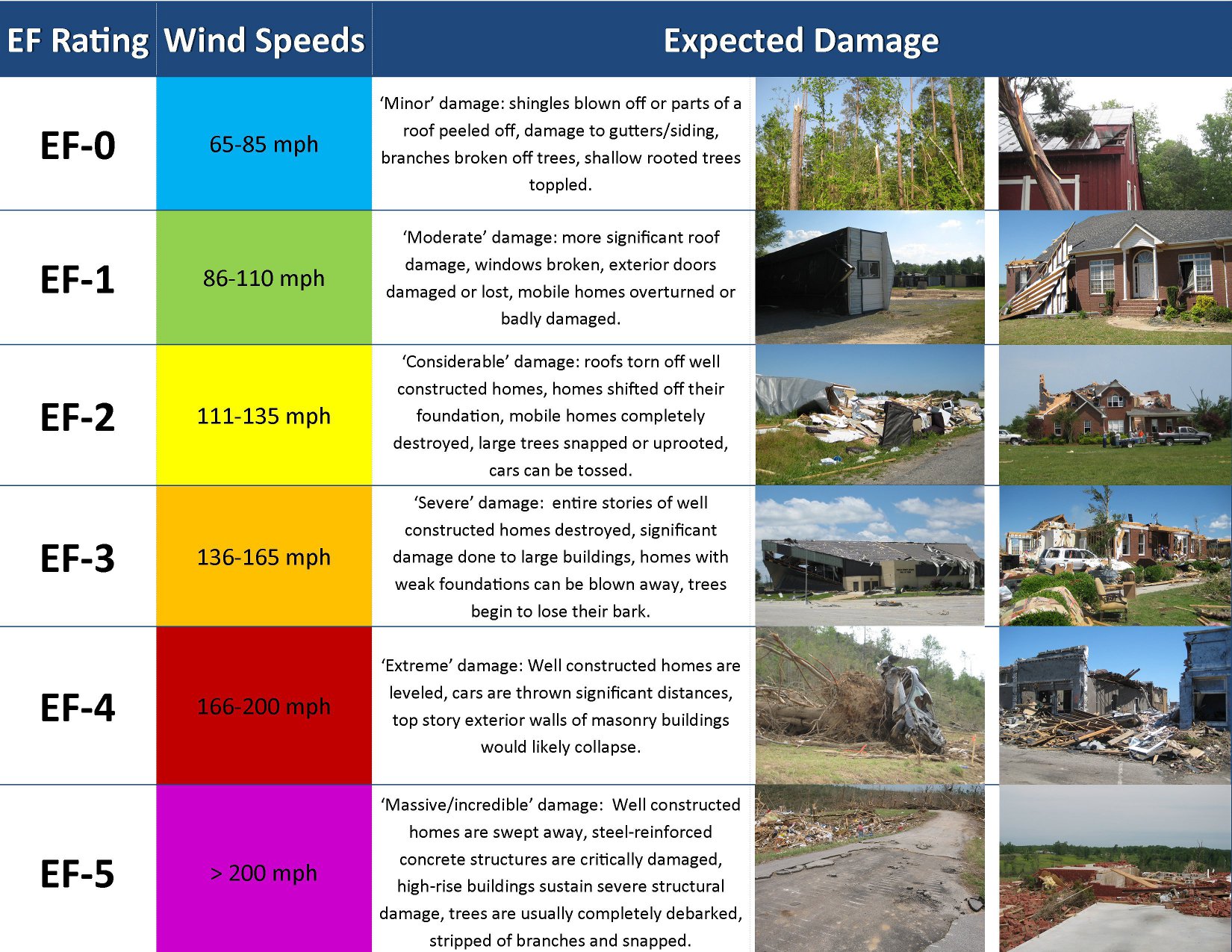
How to stay safe when a tornado threatens

Prepare NOW
- Know your area’s tornado risk. The Southeast region of the U.S. is one that has a greater risk for tornadoes.
- Know the signs of a tornado, including a rotating, funnel-shaped cloud; an approaching cloud of debris; or a loud roar—similar to a freight train.
- Sign up for weather warning systems and alerts in your community. Two of the national emergency alert systems are:
- Pay attention to weather reports. Meteorologists can predict when conditions might be right for a tornado.
- Identify and practice going to a safe place in the event of high winds.
Survive DURING
- Immediately go to a safe location that you identified. The best protection is a small, interior, windowless room on the lowest level of a sturdy building.
- Take additional cover by shielding your head and neck with your arms and putting materials such as mattresses, cushions, furniture and blankets around you.
- Listen to alerting systems for current emergency information and instructions.
- Do not try to outrun a tornado in a vehicle. If you are in a car or outdoors and cannot get to a building, cover your head and neck with your arms and cover your body with a coat or blanket.
- Do not get under an overpass or bridge. You’re safer in a low, flat location.
- Watch out for flying debris that can cause injury or death.
Be Safe AFTER
- Keep listening to EAS, NOAA Weather Radio, and local authorities for updated information.
- If you are trapped, cover your mouth with a cloth or mask to avoid breathing dust. Try to send a text, bang on a pipe or wall, or use a whistle instead of shouting.
- Stay clear of fallen power lines or broken utility lines.
- Do not enter damaged buildings until you are told that they are safe.
- Save your phone calls for emergencies. Phone systems are often down or busy after a disaster. Use text messaging or social media to communicate with family and friends.
- Be careful during clean-up.


